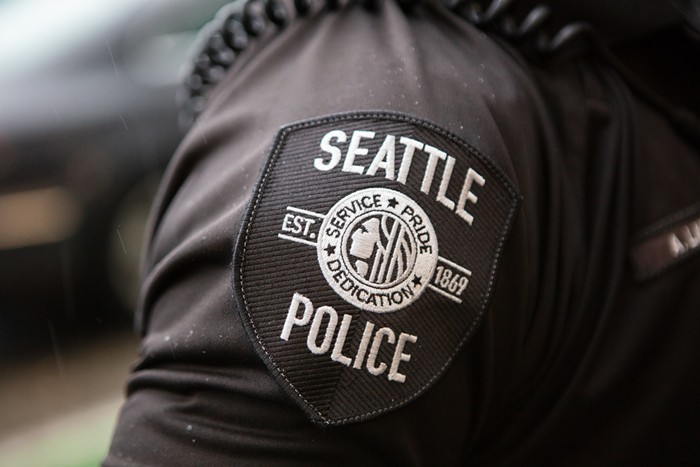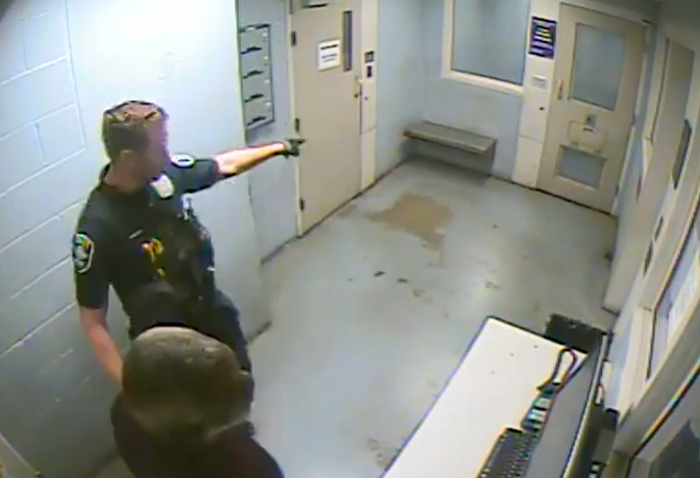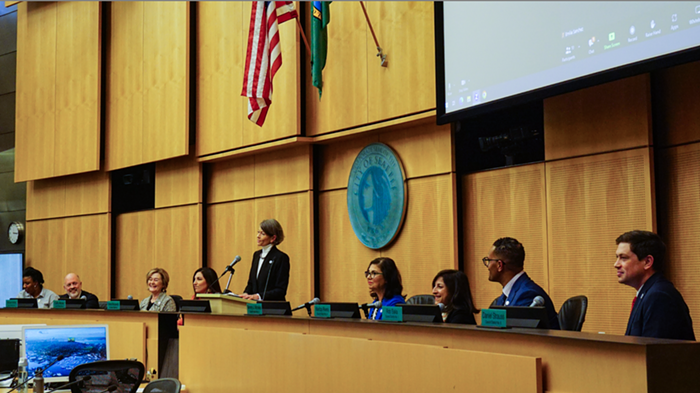Defying expectations that they would oppose any regional transportation tax that included the reviled cross-base highway through the last remaining oak prairie in Western Washington, a majority of Puget Sound environmental groups signed off on a massive road-expansion package last week that does just that—caving before a threatened veto by Pierce County Executive John Ladenburg, who said he would keep the package off the November ballot in Pierce County if the cross-base highway was not included.
The compromise was reached in a grueling all-night meeting at Sound Transit headquarters Thursday, June 7, from which negotiators emerged exhausted at 11:00 the next morning, two hours after the scheduled start of a meeting to determine the fate of the package. The deal keeps the cross-base highway alive until at least 2009, when the two sides will go into mediation. Environmental groups who agreed to the compromise point out that by that time, Ladenburg will be out of office. But the cross-base highway is hardly the only controversial highway project in the package, known as the Regional Transportation Investment District. The proposal also includes 1,500 new lane miles of freeways and arterials, including $904 million to widen I-405 on the Eastside; $798 million to connect SR-509 to I-5; $972 million to replace the aging SR-520 bridge across Lake Washington; and hundreds of millions in sprawl-feeding highway-widening projects in places like Monroe and Marysville, billed in the RTID plan as "congestion relief." Surprisingly, there has been almost no debate about any of those road-expansion projects.
Why would environmental groups, traditionally opposed to freeway expansion, support such a roads-heavy transportation package? Those involved in the negotiations, including the Transportation Choices Coalition and the Tahoma Audubon Society (of Pierce County), justify their support for November's joint roads/transit package by pointing out that it includes 50 miles of light rail; the roads package was linked to Sound Transit earlier this year. They also hold out hope that the debate around transportation will shift further away from highway building in the next two years. "I think the next [Pierce County] executive is less likely to be so personally invested in the project that they [like Ladenburg] will ignore all common sense," says Bryan Flint, director of the Tahoma Audubon Society, which signed off on the plan. Previously, Flint had insisted that his group would "actively campaign against" any RTID proposal that included the cross-base highway—a major reversal.
Transportation Choices Coalition, which has developed a reputation for capitulating to roads supporters in exchange for environmental compromises, acknowledges that last week's deal isn't the win they were looking for; but policy director Rob Johnson says it's better than just walking away. "We were put in a very difficult situation where, at the end of a long process, we were losing political support rapidly for what we thought was an important project," Johnson says, referring to Sound Transit. "Most of us decided that there was enough benefit in the mediation process to convince us."
A few environmental groups have rejected TCC's middle-of-the-road position. Mike O'Brien, chairman of the Cascade chapter of the Sierra Club, says supporting any roads project would be hypocritical. "We can't say that we need to reduce greenhouse gases in this region by 80 percent and then turn around and tell our membership we're supporting a roads project that does the opposite," O'Brien says. He adds: "The mere existence of light rail doesn't do anything. We fix greenhouse gases by getting people out of cars. Light rail is one of many tools we can use, but if we're simultaneously building more freeways, it's not going to do any good." Sound Transit has estimated that the new light-rail lines will add 160,000 new riders to the system by 2030. But the greenhouse-gas benefit of 160,000 new riders will be canceled out by the massive roads expansion in RTID. Compared to the hundreds of miles of new roads in the package, O'Brien says, "[The cross-base highway] is really relatively small. It was a great example of a really bad highway, but there are other ones in there too."
Enviros who agreed to the compromise argue that, had they done nothing, the package would have almost certainly failed. That's because if Pierce County had pulled out of the package, its residents would have been left voting only on the Sound Transit portion of the package—a measure the conservative county would almost definitely oppose. No big deal, RTID opponents say—a "no" vote would allow Sound Transit to come back to the ballot on its own, unlinked to the environmentally damaging roads-expansion projects included in RTID. "Some people think we need to defeat bad roads right now and get light rail," O'Brien says. "We'd rather kill it all now and come back with light rail really soon." RTID supporters say that if the joint transit/roads package fails, it will be years before a new light-rail proposal can come back to the ballot.
Conservation Northwest, the only other Northwest environmental group to oppose last week's compromise, was not available for comment before press time. However, on their website, the group issued a scathing broadside against the compromise proposal. "The idea of paving our last remaining prairies was a bad idea last week when the RTID board rejected that portion of the cross-base highway, and is still a bad idea today," the group's conservation associate, Jen Watkins, said in a statement. If the region's other environmental groups had exhibited the same clarity, we might be on our way to a transit proposal that actually reduces greenhouse gases and helps congestion. Instead, we're left with a "roads and transit" package that includes 1,500 new miles of road—hardly the "compromise" environmentalists were looking for.
One thing environmental groups who favored the compromise point out is that even if mediation ends up favoring the cross-base highway, Pierce County will still be hundreds of millions of dollars shy of the $477 million it needs to finish the highway. The most Pierce County can get out of the negotiations is $90 million; the minimum is $30 million. Both outcomes would force Pierce County to seek alternative funding for the highway. However, environmentalists who opposed the compromise point out that Pierce County can do this anyway; why, then, would environmental groups sell out light rail for a package that only paves the way for that to happen? ![]()


















